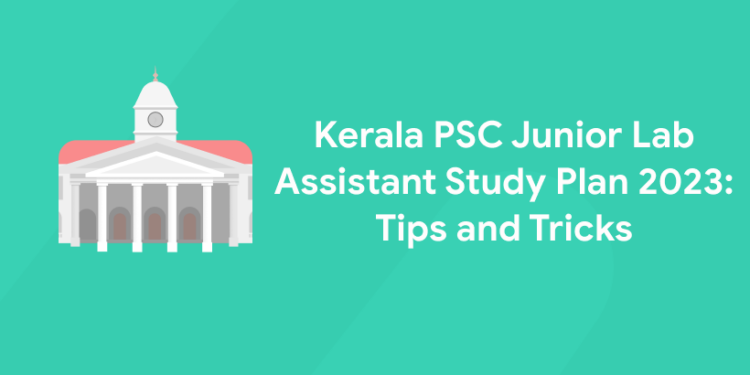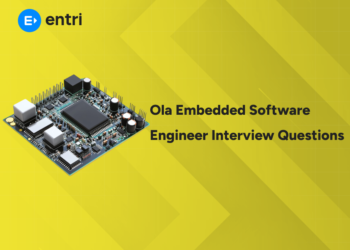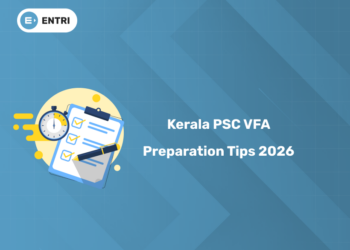Table of Contents
Kerala PSC Junior Lab Assistant Study Plan 2023: Are you anxiously waiting for the exam dates for the Kerala PSC Junior Lab Assistant exams? The Commission has published the notification PDF for the Junior Lab Assistant Recruitment 2023. Candidates between 18 and 39 of age limit can apply. Qualified individuals will choose through direct recruitment. If eligible, submit your application online on or before November 11, 2022.
The Kerala PSC exam for the recruitment of Junior Lab Assistant will be for a total of 100 marks. The duration of the exam is 1 hour 30 minutes. Also, try to prepare yourselves for the interviews. And it’s a better time to start your preparations. Before getting into your topics, let’s create a Kerala PSC Junior Lab Assistant Study Plan to win.
Join our Telegram channel to get Free study materials and quizzes
Kerala PSC Junior Lab Assistant Study Plan 2023: Overview
The Kerala Public Service Commission will recruit qualified applicants for the position of Junior Lab Assistant under Category numbers 011/2022 and 076/2022 to fill the 28 vacancies. The Commission issued an official notification on this on February 28, 2022. Eligible candidates will select through Direct recruitment. Candidates between 18 and 36 of age limit can apply. For additional information, please visit the Kerala Public Service Commission’s website at www.keralapsc.gov.in.
| Description | Details |
| Board Name | Kerala Public Service Commission |
| Post Name | Junior Lab Assistant |
| Category Number | 011/2022 & 076/2022 |
| Category | Syllabus |
| Method of Appointment | Direct Recruitment |
| Vacancy | 28 |
| Salary | Rs. 27900 – 63700 |
| Selection Process | Written exam/ OMR/ Interview |
| Official Website | www.kpsc.gov.in |
Kerala PSC Junior Lab Assistant Study Plan 2023
1: Which Year First Assembly Election was held in Kerala?
The Kerala PSC Junior Lab Assistant preparation is done best when you make a topic-intensive study plan. Understand which topic carries maximum marks weightage and divide your study schedule accordingly. Understanding the Kerala PSC Junior Lab Assistant exam pattern will also help your studies and preparation.
Planning out a timetable for your preparations is the first step to scoring high marks. Put your effort into creating one, or you can follow the study plans below. It all depends on you. Try not to pressurize yourself. Take short notes as you go through the topics.
- If you only have 50 days until the exam,
| Days | Topics |
| First 10 days | PART I topics and do the questions that come under this topic. |
| The second set of 10 days | PHYSICS and CHEMISTRY topics along with the questions. |
| Next 10 days | ZOOLOGY and BOTANY topics and questions. |
| Next set of 10 days | General Knowledge, CURRENT AFFAIRS, RENAISSANCE IN KERALA
sections |
| The last 10 days | Revise your notes and try doing previous year’s questions as many times as you can. |
- If you have 30 days till your examinations,
| Days | Topics |
| First 10 days | Go through PART I topics and solve out some previous year’s questions too (minimum 20 questions). |
| The next 10 days | Give your time for PHYSICS and CHEMISTRY sections and do some questions. |
| The next 7 days | Prepare the ZOOLOGY and BOTANY sections as much as you can and keep doing more questions. |
| Last 3 days | General Knowledge, CURRENT AFFAIRS, RENAISSANCE IN KERALA sections.
Revise what you’ve gone through the past days and along with it try solving some more questions. |
Kerala PSC Junior Lab Assistant Syllabus and Exam Pattern 2022
Enroll in Kerala's Top-rated Kerala PSC Coaching Program!
സർക്കാർ ജോലി എന്ന സ്വപ്നം ഇനി സ്വപ്നം മാത്രമല്ല! Join Entri's Kerala PSC Coaching Programs
Join Now!Kerala PSC Junior Lab Assistant Exam 2023: Topics to Cover
You must focus on the main subjects during your preparation days, especially for competitive exams like PSC Junior Lab Assistant. Some of the relevant topics are:
PART – I
Blood and Phlebotomy
Methods of blood collection – Capillary Puncture
Arterial puncture and venous puncture
Sites of blood collection: Capillary and Venous.
Identification of blood cells: Leishman’s stain Blood cell
types: RBC, WBC, Platelets (Identifying characters and
Normal Range )
Hematology
Hemocytometry
Counting chamber : improved Neubauer
Total cell counts: RBC,WBC,Platelet,Absolute Eosinophil
count. (Diluting fluids, Normal value, Clinical Significance),
Reticular Count : Clinical significance
Hemoglobin estimation : Enumerate methods ,WHO
recognized method : cyanmethemoglobin
method,significance.
PCV – Methods, Wintrobe ‘s method, Normal value
clinical significance.
ESR- Method (westergren’s method), Normal
value,Clinical Significance.
Test for coagulation: Bleeding time methods & Normal
value of Duke’s method. Clotting time methods & Normal
value of Capillary tube method
Automation
Hematology analyser, Haemogram, CBC
Blood Banking and Immuno Immunohematology
Blood group antigens and antibodies.
Blood group system.
(ABO and Rh system in detail)
Inheritance of blood group.
Hemolytic Disease of New Born (HDN )
Blood grouping techniques.
Cell grouping and Serum grouping.
Slide and tube method
Transfusion phlebotomy
Donor screening , Donor selection criteria.
Blood bank-Anticoagulants.
Blood components.
Compatibility testing and issue of blood.
Cross matching-Minor and Major.
Mention 3 phases.
Transfusion reaction:Name only.
Clinical Pathology
Analysis of Urine, Sputum, Stool, Semen, CSF
(physical,Chemical, Microscopic examination, Importance)
Biochemistry
Blood Glucose estimation
Types of samples: FBS, PPBS,RBS
Methods of estimation.Normal value, Clinical significance,
Relevance of HbAlc
Renal function test
Enumerate the common test included.
Common method used for the estimation of Blood urea,
Serum creatinine (normal values). Clearance test (Urea &
Creatinine)
Liver function test
Common tests included. Method used for estimation of
Bilirubin (Malloy and Evelyn method)
Lipid profile
Tests included in lipid profile
Common method for the estimation of cholesterol.
Other parameters of Diagnostic importance. Serum
electrolytes: Sodium, Potassium. Normal value and
Clinical significance.
Name cardiac Markers.
Name Tumor Markers.
Microbiology
Classification of bacteria based on Morphology.
Sterilization methods.
Hot Air Oven, Autoclave (Use )
Disinfectants & Antiseptics (Application)
Culture Media: Classification of culture media with
example.
Culture Methods: Streak , Stroke, Stab, Lawn culture,
Anaerobic technique (gaspak)
Identification of bacteria : Different methods .
Detection of motility : Names of different methods
(Hanging Drop Method )
Staining : (Simple stain, gram stain, AFB stain)
Diagnostic significance.
Biochemical tests : Coagulase, Catalase, & IMViC
Immunology
Types of immunity, types of antibody (IgG, IgA, IgM, IgD,
IgE)
Parasitology
Laboratory diagnosis of Malaria (Disease, Mode of
transmission, host, causative agent. Types of Malaria,
Thick and thin smear. Other stains used: JSB, Other
methods : card method ,QBC.
Laboratory Diagnosis of Filariasis .
(Disease, mode of transmission,host and nocturnal habit.
Lab diagnosis : Wet smear examination , thick smear
examination, concentration techniques.
Histotechnology And Cytology
Histotechnology :Tissue processing (steps of tissue
processing), Microtomes, staining: (H and E stain)
Diagnostic cytology : Types of specimen , Processing ,
Fixation (fixatives used), Staining, advantages and
application of diagnostic cytology
PART – II
PHYSICS
Units and measurement : Units for measurement, CGS Unit , SI
unit, Accuracy and errors in measurement, Significant figures
Motion in one, two and three dimensions: Distance and
displacement, Speed and velocity, Acceleration, Equations of
motion, Projectile motion, Uniform circular motion
Laws of Motion : Newtons laws of motion, Force, Inertia, Linear
momentum and its conservation, Friction
Work, Energy and Power : Work, Energy, Different forms of
Energy, Kinetic Energy, Potential energy, Conservation of energy,
Power
Rotational motion : Centre of Mass, Angular momentum and its
conservation, Torque, Principle of moments, Moment of Inertia,
Rotational kinetic Energy
Gravitation : Mass and weight, Acceleration due to gravity and its
variation with height and depth
Mechanics of solids and liquids : Elastic properties of solids,
Stress, Strain, Hooke’s law, Modulus of Elasticity, Fluid pressure,
Pascal’s law, Buoyancy, Surface tension, Viscosity, Capillary rise,
Bernoulli’s theorem and its applications
Heat: Measurement of temperature,Thermal expansion, Specific
heat capacity, Latent Heat, Transfer of heat, Newton’s law of
cooling.
Waves: Longitudinal and transverse waves, Speed of wave
motion, Reflection of waves, Echo.
Electrostatics: Electric charges and their properties, Coulomb’s
law, Electric field, Electric potential, Capacitance, Capacitors in
series and parallel, capacity of a parallel plate capacitor
Current electricity : Electric current, Ohm’s law, Resistance and
resistivity, Resistance in series and parallel, Carbon resistors,
Kirchoff’s
Magnetism : Earth ‘magnetism, para, dia and ferromagnetic
substances, Electromagnets and permanent magnets.
Electromagnetic induction: Faraday’s law, Lenz’s law, Eddy
current, Self Induction, Mutual induction
Alternating current : AC generator, LCR circuit, Reactance,
Impedance, Resonance, Transformer
Electromagnetic waves : Electromagnetic waves and their
properties, Electro magnetic spectrum and their uses
Optics : Reflection, Refraction, Total internal reflection, Refraction
through prism, Refraction through lens, Lenses in contact,
Magnification, Power of lens, Dispersion, Scattering, Interference,
Diffraction, Polarisation, Microscope, Telescope
Dual nature of matter and radiations: Photoelectric effect, Matter
wave
Semiconductors : Conductors, insulators and semiconductors,
Intrinsic semiconductors, Extrinsic semiconductors, Diode,
Transistor
 PART – III
PART – IIICHEMISTRY
Periodic classification of elements – Earlier classifications – Modern
Periodic law and Periodic Table – various groups in Modern
Periodic Table
Classification of elements in blocks- Periodic properties and their
variation along group and period with reason
Allotropes of Carbon – Diamond and Graphite their structure and
properties
Compounds of Nitrogen -Ammonia and Nitric acid, compounds of
sulphur -sulphuric acid
Lanthanoids and Actinoids-Interhalogen compounds
Types of water-Hardness of water-causes of hardness and its
removal
Different atom models by J J Thomson, Rutherford, Niels Bohr Quantum numbers and orbital representation-orbit and orbital Electronic configuration and Aufbau principle
Colloids and emulsions-type of colloids with examples-colloids
around us
Ores of different metals -methods of extraction of metals
VSEPR Theory and shapes of molecules
Seven crystal systems with examples
Different types of electrochemical cells
Different methods used for purifying organic compounds –
distillation, crystallisation, sublimation
Tests for alcohol, aldehydes, ketones, phenol
Molarity, molarity calculations
Mole concept calculations
Chemicals in food, medicines and as cleansing agents
Greenhouse effect-acid rain
Different polymers with examples
Hydrocarbons-general formula -structural representation
PART – IV
BOTANY
1. Diversity in Living World
Biodiversity, Taxonomy, Taxonomic hierarchy, Binomial
nomenclature, Tools for study of Taxonomy – Museums, Zoos,
Herbaria, Botanical gardens
Biological classification -Five kingdoms, virus, viroids and
lichen
Plant Kingdom – Brief classification of plants with examples
2. Structural Organisation in plants
Plant morphology – root, stem and leaf structure &
modification, Flower morphology, floral diagram and floral formula
of Fabaceae, Solanaceae and Liliaceae
Plant anatomy – Internal structure of plant, tissues, tissue
systems, Primary structure of stem, root & leaf. Secondary growth
in stem and root
3. Cell and cell division
Structure of plant and animal cell, various cell organelles and
their function.
Biomolecules-structure and function of proteins,
carbohydrates, lipid, nucleic acids; Enzymes-types, properties and
mode of action .
Cell division-cell cycle,mitosis and meiosis
4. Plant Physiology
Transport in plants -cell to cell transport, plant water
relations, transport of water and minerals, transpiration and its
mechanism, guttation and translocation of minerals.
Plant nutrition-classification of minerals in plants, their role,
deficiency symptoms, nitrogen cycle, biological nitrogen fixation.
Photosynthesis-photosynthetic pigments, photochemical
phase-cyclic and non cyclic photophosphorylation, biochemical
phase-photorespiration, C3 and C4 cycles. Factors affecting
photosynthesis.
Respiration-aerobic & anaerobic respiration, steps in cell
respiration–Glycolysis,TCA Cycle, Terminal oxidation, energy
relation and respiratory quotient.
Plant growth and development: Phases of plant growth;
Differentiation, dedifferentiation and redifferentiation; Growth
regulators-auxin, gibberellin, cytokinin, ethylene, ABA, Seed
dormancy; Vernalisation and Photoperiodism.
Reproduction in flowering plants: Development of male and
female gametophytes; Pollination – types,agencies and
examples.Out breedings devices; Double fertilisation; Post
fertilisation events-Development of endosperm and embryo and
seed ,Special modes – apomixis, parthenocarpy, polyembryony.
5. Ecology and environment
Organism and Environment:Environmental factors, Ecological
levels-species,population & community, ecological adaptations.
Population attributes-growth birth rate and death rate and age
distribution. Population interactions.
Ecosystem: Structure and function, Productivity,energy flow,
food chain, food web and ecological pyramids. Biogeochemical
cycles, Ecological succession.
Environmental issues : Air, water, soil and noise pollution.
Solid waste management,radioactive waste management. Green
house and global warming ,ozone depletion.
Zoology
1. Animal Physiology
Animal nutrition and its type, food components, malnutrition,
disorder related to nutrition. Human digestive system and process
of digestion
Respiration :Respiratory organs,Respiration in man –
mechanism and its regulation, gas exchange, respiratory volume
and respiratory disorders
Circulation:Blood and its composition. Human heart
-structure and working ,double circulation, ECG, circulatory
disorders
Excretion:Structure and function of human kidney,
osmoregulation, regulation of urine formation. Other excretory
organs
Locomotion and Movements : Human skeleton , types of
joint, Types of muscle and structure, Mechanism of muscle
contraction and disorders
Nervous coordination : Human Nervous system -structure
and function of brain and spinal cord ,nerve impulse
transmission .Sensory receptors – structure and function of eye,
ear and tongue.
Endocrine system : endocrine glands, hormones and their
functions,hormonal imbalance and disorders.
Reproduction and development:Human male and female
reproductive system, menstrual cycle, gametogenesis fertilisation
and embryo geny. Placenta and its function.
2. Genetics and Evolution
Heredity and variation : Mendelian inheritance. Non
-Mendelian inheritance-incomplete dominance, co-dominance,
multiple alleles and polygenic inheritance, Sex determination.
Mendelian disorders and chromosomal disorders.
Molecular basis of inheritance: Structure of DNA and RNA,
Search for DNA as genetic material, Nucleosomes.Functions of
DNA – replication, transcription and translation .Central dogma,
genetic code. Gene expression and regulation -Lac operon.
Evolution : Origin of life ,Theories of evolution, evidence of
evolution , Natural selection and example, types of selection,
Hardy-Weinberg’s principle and human evolution
3. Animal Kingdom
Salient features and classification of animals, non -chordates
and chordates up to classes level. Morphology and internal
structure of Earthworm, cockroach and frog.
4. Biology and Human welfare
Birth control measures, Assisted reproductive technologies,
STD Common problems of adolescence, problem associated with
drugs, smoking and alcoholism
5. Application Biology
Animal and plant breeding, Tissue culture, Biotechnology
principles and its applications in agriculture and medicine.
Biopatent, Biopiracy, biofertilizers, sewage treatment, biogas and
biomedical technologies.
PART – V
General Knowledge, CURRENT AFFAIRS & RENAISSANCE IN KERALA
Facts about India
Geography of India – Physical features – Climate – Soils – Rivers – Famous sites –
etc.
Demography – Economic and social development – Poverty alleviation – Economy
and planning – etc.
History of India – Period from 1857 to 1947 – National movement
Five Year Plans
Facts about Kerala
Geographical Facts – Physical features – Climate – Soils – Rivers – Famous sites –
Economic and Social deve – Historical importance – etc.
Renaissance in Kerala
Important Events/Movements/Leaders
Brahmananda Swami Sivayogi, Chattampi Swami, Sree Narayana
Guru, Vagbhatananda, Thycaud Ayya, Ayya Vaikundar, Poikayil
Yohannan (Kumara Guru), Ayyankali, Pandit Karuppan, Mannathu
Padmanabhan,V. T. Bhattathiripad, Dr. Palpu, Kumaranasan, Vakkom
Moulavi, Blessed Kuriakose Elias Chavara, Etc.
Current Affairs
Important world, national and regional events related to the political and scientific
fields, sports, cinema, literature etc.
Kerala PSC Junior Lab Assistant Mock Test
Attempting mock test series is a very important part of the preparation. By attending mock tests candidates get familiarized with exam patterns and can improve their preparation. Through daily practice, mock tests will make the candidate more efficient and get to know about time management.
Solving a large number of questions can always be beneficial while attending a competitive exam. A question can provide you a reach to many topics. As the exam is almost near. While you start preparing, keep an eye on every single topic and should focus on main important topics.Thus, it is always effective to try out various questions.
| Topics | Links |
| Free mock tests of paper 2016 | Click here. |
| Free mock tests of paper 2017 | Click here. |
| Free mock tests of paper 2018 | Click here. |
| Free mock tests of paper 2019 | Click here. |
Kerala PSC Junior Lab Assistant Previous Year Question Paper
Attempting Kerala PSC Junior Lab Assistant previous question papers is an important part of exam preparation.Referring to previous year’s questions will give an idea of the exam pattern. Also, it helps you to study effectively. It becomes easier for you to know which are the important topics that need your focus.Through solving previous questions, you may get an idea of the important topics while preparing. Solving out previous questions adds more points to your exams. The chances of reappearing the previous year’s questions in the exams are high. Thus, it is very relevant to find previous question papers.
Download Kerala PSC Junior Lab Assistant Previous Question Paper
Mocks test questions that can be effective for the preparation of Kerala PSC Junior Lab Assistant exam in 2023 are listed below.
Q.1 Cob-web appearance of CSF is seen in
- A) syphilis
- B) Tubercular meningitis
- C) Malaria
- D) Hepatitis
Ans: Tubercular meningitis
Q.2.The food for work programme was later renamed as
- A) IRY
- B) IRDP
- C) NREP
- D) RLEGP
Ans: NREP
Q.3.Which of the following is an enrichment media?
- A) Macconkey agar
- B) Nutrient agar
- C) Peptone water
- D) Selenite F broth
Ans: Selenite F broth
Q.4.Which of the following is a natural anticoagulant?
- A) EDTA
- B) Double Oxalate
- C) ACD
- D) Heparin
Ans: Heparin
Q.5.Volume of ACD solution used to collect 100ml of blood is
- A) 16ml
- B) 30 ml
- C) 28ml
- D) 5ml
Ans: 16ml
Q.6.Canary grass experiment related hormone
- A) Auxin
- B) Gibberellin
- C) ABA
- D) Ethylene
Ans: Auxin
Q.7.Round shaped bacteria are called
- A) Bacilli
- B) Vibrios
- C) Actinomycetes
- D) Cocci
Ans: Cocci
Q.8.Kaolinite is the ore of
- A) Copper
- B) Iron
- C) Aluminium
- D) Zinc
Ans: Aluminium
Q.9.Ideal time for collecting blood sample for detection of filarial worm is
- A) 2pm – 4pm
- B) 10pm – 2am
- C) 6am – 8am
- D) 10am – 2pm
Ans: 10pm – 2am
Q.10.Father of Microbiology is
- A) Robert Koch
- B) Joseph Lister
- C) Edward Jenner
- D) Louis Pasteur
Ans: Louis Pasteur
Q.11.Identify a Renal function test from the following tests
- A) Blood Sugar
- B) Serum Bilirubin
- C) Blood Urea
- D) Total Cholesterol
Ans: Blood Urea
Q.12.Which of the following antibody can cross the placenta
- A) Ig M
- B) Ig E
- C) Ig A
- D) Ig G
Ans: Ig G
Q.13.The river that originates in the Anamudi Hills, flowing to Tamil Nadu
- A) Bhavani
- B) Pambar
- C) Khabani
- D) Chaliar
Ans: Pambar
Q.14.Basic unit of classification is
- A) Family
- B) Genes
- C) Species
- D) Order
Ans: Species
Q.15.Percentage of alluvial soil in India
- A) 18.5%
- B) 15%
- C) 28%
- D) 43%
Ans: 43%
Q.16.The place known as Gateway of Kerala
- A) Wayanad
- B) Palakkad
- C) Cochin
- D) Thiruvananthapuram
Ans: Palakkad
Q.17.Author of the work ‘The Other Side Of Silence’ which deals with the atrocities during the partition of India
- A) Rajendar Singh Bedi
- B) Urvasi Butalia
- C) Bishma Sahni
- D) Amitav Ghosh
Ans: Urvasi Butalia
Q.18.Name the combined operation of Navy, Army and Airforce to rescue the okhi victims
- A) Operation Synergy
- B) Operation chain protection
- C) Operation Flying Eagle
- D) Operation Seashore
Ans: Operation Synergy
Q.19.The dilution that can be made using an RBC pipette is
- A) 1/200
- B) 1/10
- C) 1/50
- D) 1/20
Ans: 1/200
Q.20.Joint between Atlas and Axis
- A) Pivot Joint
- B) Hinge Joint
- C) Ball and Socket Joint
- D) Hinge Joint
Ans: Pivot Joint
Enroll in Kerala's Top-rated Kerala PSC Coaching Program!
സർക്കാർ ജോലി എന്ന സ്വപ്നം ഇനി സ്വപ്നം മാത്രമല്ല! Join Entri's Kerala PSC Coaching Programs
Join Now!Kerala PSC Junior Lab Assistant Study Plan 20223: Tips
- Take an effort to collect the study materials and make yourself prepared for the upcoming exam.
- Keep all the study materials ready before you start preparing for the exam.
- Revise all the subjects to make your preparation effective.
- Make sure that you are spending at least 8 to 10 hours studying.
- Make short notes which can be used for quick revision before entering the exam hall.
- Taking online mock tests help you to improve your preparation for the exam.
- Practice at least 5 to 6 Mock Tests before the exam.
- Go through previous question papers with solutions.
- collect Kerala PSC Junior Lab Assistant Exam Syllabus, Test Pattern for perfect preparation for the examination.
- Know subject weightage to concentrate on the high weightage topics.
Download Entri App! Start preparing for your Kerala PSC exam!
| Kerala PSC Junior Lab Assistant Exam Information Links | |
| Kerala PSC Junior Lab Assistant Syllabus | Kerala PSC Junior Lab Assistant Selection Process |
| Kerala PSC Junior Lab Assistant Shortlist | Kerala PSC Junior Lab Assistant Mock Test |
| Kerala PSC Junior Lab Assistant Rank List | Kerala PSC Junior Lab Assistant Video Course |
| Kerala PSC Junior Lab Assistant Notification | Kerala PSC Junior Lab Assistant Study Materials |
| Kerala PSC Junior Lab Assistant Vacancy | Kerala PSC Junior Lab Assistant Interview Questions |
| Kerala PSC Junior Lab Assistant Admit Card | Kerala PSC Junior Lab Assistant Job Profile |
| Kerala PSC Junior Lab Assistant Exam Date | Kerala PSC Junior Lab Assistant Salary |
| Kerala PSC Junior Lab Assistant Previous Question Papers | Kerala PSC Junior Lab Assistant Preparation Tips |
| Kerala PSC Junior Lab Assistant Best Books | Kerala PSC Junior Lab Assistant Cutoff |
| Kerala PSC Junior Lab Assistant Eligibility Criteria | Kerala PSC Junior Lab Assistant Exam Analysis |
| Kerala PSC Junior Lab Assistant Answer Key | |













